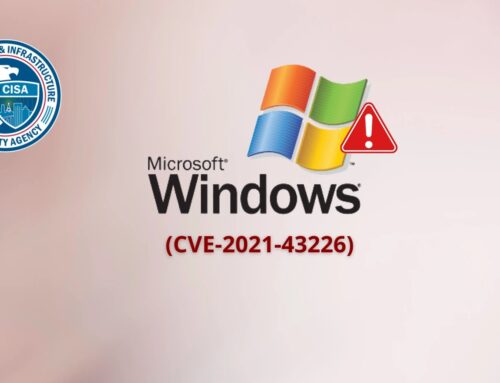
Red Hat Data Breach – Threat Actors Claim Breach of 28K Private GitHub Repositories
Red Hat Data Breach: The Crimson Collective’s Bold Claim of 28K GitHub Repositories Breached
The digital landscape has once again been shaken by a significant cybersecurity incident, as an extortion group dubbed the “Crimson Collective” claims to have successfully breached Red Hat’s private GitHub repositories. This alleged intrusion has sent ripples through the tech community, with the attackers purporting to have exfiltrated a staggering 570GB of compressed data from approximately 28,000 internal repositories. If validated, this event marks one of the most substantial data thefts in technology history, involving the unauthorized extraction of proprietary source code and sensitive confidential information.
Understanding the Alleged Attack
The Crimson Collective’s claim centers around a sophisticated data exfiltration operation targeting Red Hat, a leading provider of open-source software solutions. The alleged breach specifically focuses on Red Hat’s private GitHub instances, which are critical for software development, hosting vast amounts of intellectual property, proprietary code, and potentially sensitive configuration files or credentials. The sheer volume of data—570GB compressed, originating from 28,000 repositories—indicates a deep and prolonged penetration, suggesting a potential high level of access obtained by the threat actors.
Such a breach highlights common vulnerabilities within enterprise development environments. Threat actors often target source code repositories due to the inherent value of the data they contain. This can include:
- Proprietary Algorithms and Intellectual Property: The core of a company’s competitive advantage.
- Vulnerability Disclosure: Source code can reveal unpatched weaknesses in software.
- Configuration Details: Exposure of API keys, database credentials, or server configurations.
- Strategic Planning Documents: Information embedded within comments or commit messages.
Implications for Red Hat and the Open Source Ecosystem
The implications of this alleged breach for Red Hat are multi-faceted and potentially severe. Beyond the immediate reputational damage and potential financial costs associated with incident response and remediation, the exfiltration of such a vast amount of source code presents several critical challenges:
- Supply Chain Risk: As a major contributor to and maintainer of numerous open-source projects, a breach of Red Hat’s repositories could introduce vulnerabilities into the broader open-source ecosystem, affecting countless downstream users and organizations worldwide.
- Competitive Disadvantage: The theft of proprietary source code could provide competitors with an unfair advantage, potentially impacting Red Hat’s market position.
- Customer Trust: Maintaining customer trust is paramount for any technology company. A breach of this magnitude could erode confidence in Red Hat’s security posture.
- Compliance and Regulatory Scrutiny: Depending on the nature of the exfiltrated data (e.g., customer data, personally identifiable information), Red Hat could face significant regulatory fines and legal challenges under frameworks like GDPR or CCPA.
While specific details about the methods employed by the Crimson Collective are yet to be fully disclosed, previous incidents of this nature often leverage common attack vectors such as phishing, compromised credentials, or exploiting unpatched vulnerabilities in development infrastructure. For instance, a similar but distinct vulnerability might be recorded as CVE-2023-45803, pertaining to unauthorized access to repositories due to misconfigurations. However, the exact CVE for this specific alleged Red Hat breach would only be assigned if a distinct, identified flaw was exploited and confirmed.
Remediation Actions and Best Practices for Repository Security
In the aftermath of such claims, organizations, including Red Hat, typically initiate comprehensive forensic investigations. For any organization relying on GitHub or similar version control systems, proactive security measures are paramount.
- Enforce Strong Access Controls: Implement Multi-Factor Authentication (MFA) for all GitHub accounts. Utilize role-based access control (RBAC) to limit repository access based on the principle of least privilege. Regular access reviews are crucial.
- Implement Code Scanning and Secret Detection: Use automated tools to scan code for vulnerabilities (CVE-2023-28108 for example, highlights issues found via code scanning) and to detect accidental exposure of API keys, credentials, or other sensitive information within commits or configuration files.
- Secure Development Lifecycle (SDL): Integrate security practices throughout the entire software development life cycle, from design and coding to testing and deployment.
- Webhook Security: Securely configure webhooks to prevent their misuse as an exfiltration channel or an attack vector.
- Audit Logs and Monitoring: Continuously monitor GitHub audit logs for unusual activities, unauthorized access attempts, or large data transfers. Implement alerts for suspicious events.
- Employee Training: Conduct regular security awareness training, particularly focusing on phishing prevention and secure coding practices for developers.
- Regular Penetration Testing: Engage ethical hackers to perform penetration tests on development environments and source code repositories to identify weaknesses before attackers do.
Tools for GitHub Repository Security
Protecting GitHub repositories requires a multi-layered approach involving various security tools.
| Tool Name | Purpose | Link |
|---|---|---|
| GitHub Advanced Security | Code scanning, secret scanning, dependency review, and automated vulnerability detection. | https://github.com/features/security |
| Snyk | Developer-first security for code, dependencies, containers, and infrastructure as code. | https://snyk.io/ |
| GitGuardian | Real-time secret detection and remediation across the entire development factory. | https://www.gitguardian.com/ |
| Checkmarx CxSAST | Static Application Security Testing (SAST) to identify code vulnerabilities early. | https://www.checkmarx.com/products/static-application-security-testing-sast/ |
| Semgrep | Fast, open-source static analysis for finding bugs and enforcing code standards. | https://semgrep.dev/ |
Conclusion
The alleged Red Hat data breach by the Crimson Collective serves as a stark reminder of the persistent and evolving threat landscape. The reported exfiltration of 28,000 private GitHub repositories containing 570GB of compressed data underscores the critical importance of robust cybersecurity measures for intellectual property and sensitive assets. All organizations, particularly those involved in software development, must prioritize securing their code repositories through stringent access controls, continuous monitoring, and proactive vulnerability management. The industry awaits further details and Red Hat’s official response to fully assess the impact and determine the authenticity of these serious claims.





